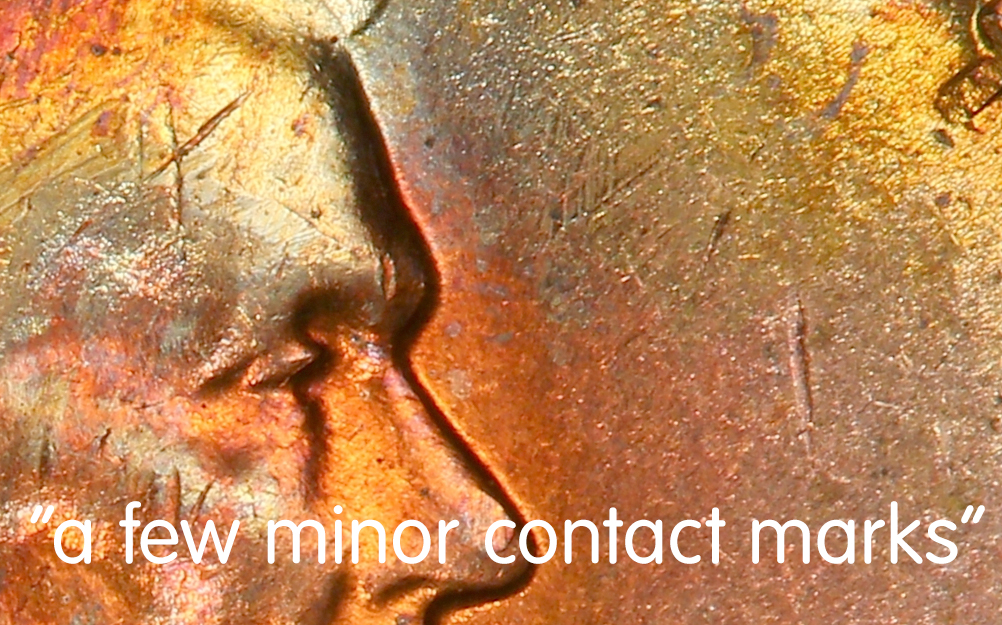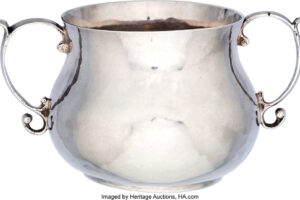Perfect example of an MS-65 Wheat Penny that has been graded accordingly. Read this page to learn more about what specifications are required to make the MS-65 graded. Based off the Sheldon grading scale.


A penny graded MS65 (Mint State 65) is a coin that falls within the Mint State category of the Sheldon Coin Grading Scale, which ranges from 1 to 70. MS65 is considered a “Gem Uncirculated” coin, which means it is in exceptional condition but not quite perfect. Here are some specific conditions you can expect from a penny graded MS65:
- Uncirculated: The penny has not been in general circulation and shows no signs of wear that would be expected from handling or circulation.
- Luster: The coin displays a strong, original mint luster, which gives it an attractive and vibrant appearance.
- Surface: The penny’s surface may exhibit a few minor contact marks or small imperfections, typically acquired during the minting process or while in storage. However, these imperfections are not significant enough to detract from the coin’s overall appearance.
- Strike: The strike of an MS65 penny is generally sharp and well-defined, with clear and precise details present in both the design and the lettering.
- Eye appeal: A penny graded MS65 has an above-average eye appeal. This means that the coin has a pleasant appearance and is visually attractive, with no major distractions that would significantly detract from its desirability.
Keep in mind that coin grading is subjective, and opinions may vary among different grading services or individual graders.



Grading A Wheat Cent Yourself

Grading a wheat penny involves examining its condition and assigning it a grade on the Sheldon Scale, which ranges from 1 to 70. Here are the steps required to grade a wheat penny:
- Clean the penny: Use a soft cloth to clean the penny gently. Do not use any harsh chemicals or abrasive materials, as they can damage the coin’s surface.
- Examine the coin: Look at both sides of the coin under a bright light and magnifying glass to check for any damage or wear. Some things to look for include scratches, nicks, dents, discoloration, and signs of corrosion.
- Determine the coin’s grade: Based on the coin’s condition, assign it a grade on the Sheldon Scale. Here is a breakdown of the scale:
- Poor (PO-1) – the coin is heavily worn and may be barely recognizable
- Fair (FR-2) – some details are visible, but the coin is heavily worn
- About Good (AG-3) – more details are visible, but the coin is still heavily worn
- Good (G-4 to G-6) – the coin has some details visible, but the high points are worn down
- Very Good (VG-8 to VG-10) – most of the details are visible, but the coin is still somewhat worn
- Fine (F-12 to F-15) – all details are visible, but the coin has some wear
- Very Fine (VF-20 to VF-30) – the coin has minor wear, but all details are clear
- Extremely Fine (EF-40 to EF-45) – the coin has light wear and all details are sharp
- About Uncirculated (AU-50 to AU-58) – the coin has slight wear, but still retains most of its original luster
- Uncirculated (MS-60 to MS-70) – the coin has no wear and retains its original luster
- Record the grade: Once you have determined the coin’s grade, record it for future reference.
Grading a wheat penny takes practice and experience, so it is important to be patient and thorough when examining the coin’s condition. It is also important to handle the coin with care, as even small scratches or fingerprints can affect its value.
Grading By A Third Party

Having a wheat penny graded by a third-party grading service involves the following steps:
- Choose a grading service: Research and choose a reputable third-party grading service. Examples include Professional Coin Grading Service (PCGS), Numismatic Guaranty Corporation (NGC), and Independent Coin Graders (ICG).
- Submit the coin: Fill out the submission form provided by the grading service and send the coin, along with the appropriate fee, to the grading service’s office. Most grading services allow you to submit coins in person or by mail.
- Wait for grading: The grading service will examine the coin using a standardized grading process and assign it a grade on the Sheldon Scale. This process typically takes a few weeks to a few months, depending on the grading service and level of service selected.
- Receive the graded coin: Once the coin has been graded, the grading service will return it to you along with a certificate of authenticity that includes the coin’s grade and other relevant information.
- Store or sell the coin: Once you have received the graded coin and certificate, you can choose to keep it in your collection or sell it based on its grade and market value.
Submitting a coin to a third-party grading service can be a good way to ensure that the coin is accurately graded and to increase its value for potential buyers. However, it is important to choose a reputable grading service and to be aware of the associated fees and wait times.










